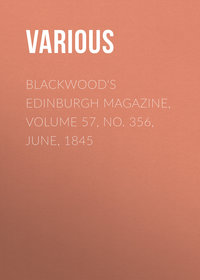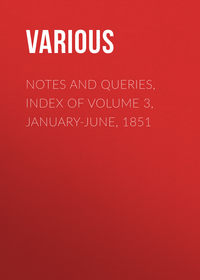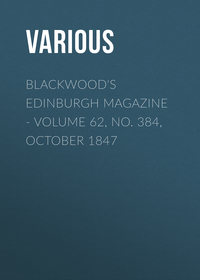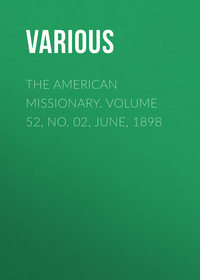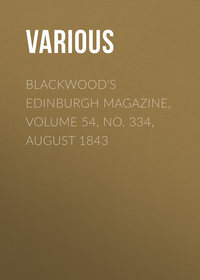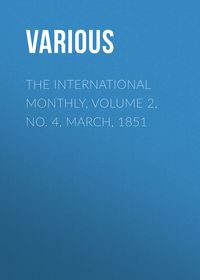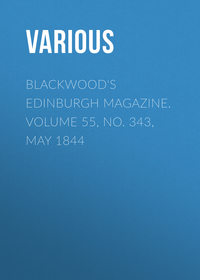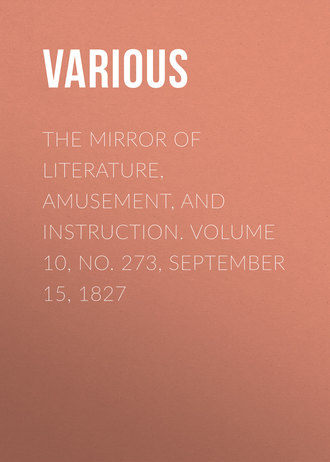 полная версия
полная версияThe Mirror of Literature, Amusement, and Instruction. Volume 10, No. 273, September 15, 1827

Various
The Mirror of Literature, Amusement, and Instruction / Volume 10, No. 273, September 15, 1827
GASPARD MONGE'S MAUSOLEUM

Sir,—As one of your correspondents has favoured you with a drawing of the gaol I designed for the city and county of Norwich, with which you have embellished a recent number of the MIRROR, I flatter myself that an engraving from the drawing I herewith send you of the mausoleum of Gaspard Monge, which I drew while at Paris, in 1822, will also be interesting to the readers of your valuable little miscellany. Gaspard Monge, whose remains are deposited in the burying ground in Pere la Chaise, at Paris, in a magnificent mausoleum, was professor of geometry in the Polytechnique School at Paris, and with Denon accompanied Napoleon Bonaparte on his memorable expedition to Egypt; one to make drawings of the architectural antiquities and sculpture, and the other the geographical delineations of that ancient country. He returned to Paris, where he assisted Denon in the publication of his antiquities. At his decease the pupils of the Polytechnique School erected this mausoleum to his memory, as a testimony of their esteem, after a design made by his friend, Monsieur Denon. The mausoleum is of Egyptian architecture, with which Denon had become familiarly acquainted.
There is a bust of Monge placed on a terminal pedestal underneath a canopy in the upper compartment, which canopy is open in front and in the back. In the crown cavetto of the cornice is an Egyptian winged globe, entwined with serpents, emblematical of time and eternity; and on the faci below is engraved the following line:—
A. GASPARD MONGE.
On each side of the upper compartment is inscribed the following memento mori:
LES ELEVES
DE L'ECOLE POLYTECHNIQUE.
A.G. MONGE.
COMTE DE PELUSE.
Underneath this inscription is carved in sunk work an Egyptian lotus flower in an upright position; on the back of the mausoleum is the date of the year in which Gaspard Monge died. The body is in the cemetery below.
AN. MDCCCXX.
Monge was a man of considerable merit as a geometrician, and, while living, stood preeminent above his contemporaries in the French school of that day. He is the author of several works, but his most popular one is entitled "Gèomètrie Descriptive. par G. Monge, de l'Institut des Sciences, Lettres et Arts, de l'Ecole Polytechnique; Membre du Sénat Conservateur, Grand Officier de la Legion d'Honeur et Cointe de l'Empire."
The programme to this work is interesting, as it urges the necessity of making geometry a branch of the national education, and points out the beneficial results that would arise therefrom. The following is the translation:—
To draw the French nation from the dependence, which, even in the present day it is obliged to place in foreign industry, it is necessary first to direct the national education towards the knowledge of those objects which require a correctness which hitherto has been totally neglected; to accustom the hands of our artists to the management of the various instruments that are necessary to measure the different degrees of work, and to execute them with precision; then the finisher becomes sensible of the accuracy it will require in the different works, and he will be enabled to set the necessary value on it. For our artists to become, from their youth, familiar with geometry, and to be in a condition to attain it, it is necessary in the second place to render popular the knowledge of a great number of natural phenomena that are indispensable to the progress of industry; they will then profit for the advancement of the general instruction of the nation, which by a fortunate circumstance it has at its disposal, the principal resources that are necessary for it. Lastly, it is requisite to extend among our artists the knowledge of the advancement of the arts and that of machines, whose object is either to diminish manual labour or to give to the result of labour more uniformity and precision; and on those heads it must be confessed we have much to draw from foreign nations.1 All these views can only be accomplished by giving a new turn to national education.
This is to be done, in the first place, by making all intelligent young men (who are born with a fortune) familiar with the use of descriptive geometry, so that they may be able to employ their capital more profitably both for themselves and the nation, and also for those who have no other fortune than their education, so that their labour will bring them the greater reward. This art has two principal objects, the first to represent with exactness, from drawings which have only two dimensions, objects which have three, and which are susceptible of a strict definition; under this point of view it is a language necessary to the man of genius when he conceives a project, and to those who are to have the direction of it; and lastly, to the artists who are themselves to execute the different parts.
The second object of descriptive geometry, is to deduce from the exact description of bodies all that necessarily follows of their forms and their respective positions; in this sense it is a means of seeking truth, as it offers perpetual examples of the passage from what is known to what is unknown, and as it is always applied to objects susceptible of the minutest evidence, it is necessary that it should form part of the plan of a national education. It is not only fit to exercise the intellectual faculties of a great people, and to contribute thereby to the perfection of mankind, but it is also indispensable to all workmen, whose end is to give to certain bodies determined forms, and it is principally owing to the methods of this art having been too little extended, or in fact almost entirely neglected, that the progress of our industry has been so slow. We shall contribute then to give an advantageous direction to national education, by making our young artist familiar with the application of descriptive geometry, to the graphic constructions which are necessary in the greater number of the arts, and in making use of this geometry in the representation and determination of the elements of machinery, by means of which, man by the aid of the forces of nature, reserves for himself, in a manner, in his operations no other labour than that of his intellects. It is no less advantageous to extend the knowledge of those phenomena of nature which may be turned to the profit of the arts. The charm which accompanies them will overcome the repugnance that men have in general for manual operations, (which most regard as painful and laborious,) as it will make them find pleasure in the exercise of their intellect; thus there ought to be in the formal school a course of descriptive geometry.
As yet we have no well compiled elementary work on that art, because till this time learned men have taken too little interest in it, or it has only been practised in an obscure manner by persons whose education had not been sufficiently extended, and were unable to communicate the result of their lucubrations. A course simply oral would be absolutely without effect. It is necessary then, for the course of descriptive geometry, that practice and execution be joined to the hearing of methods; thus pupils will be exercised in graphic construction of descriptive geometry. The graphic arts have general methods with which we can only become familiar by the use of the rule and compass. Among the different applications that may be made of descriptive geometry, there are two which are remarkable, both for their universality and their ingenuity; these are the constructions of perspective and the strict determination of the shadows. These two parts may finally be considered as the completion of the art of describing objects.
R. BROWNAN IDLER'S ALBUM; OR, SKETCHES OF MEN AND THINGS
THE RADIANT BOY
It is now more than twenty years since the late Lord Londonderry was, for the first time, on a visit to a gentleman in the north of Ireland. The mansion was such a one as spectres are fabled to inhabit. It was associated with many recollections of historic times, and the sombre character of its architecture, and the wildness of its surrounding scenery, were calculated to impress the soul with that tone of melancholy and elevation, which,—if it be not considered as a predisposition to welcome the visitation of those unearthly substances that are impalpable to our sight in moments of less hallowed sentiment,—is indisputably the state of mind in which the imagination is most readily excited, and the understanding most favourably inclined to grant a credulous reception to its visions. The apartment also which was appropriated to Lord Londonderry, was calculated to foster such a tone of feeling. From its antique appointments; from the dark and richly-carved panels of its wainscot; from its yawning width and height of chimney—looking like the open entrance to a tomb, of which the surrounding ornaments appeared to form the sculptures and the entablature;—from the portraits of grim men and severe-eyed women, arrayed in orderly procession along the walls, and scowling a contemptuous enmity against the degenerate invader of their gloomy bowers and venerable halls; from the vast, dusky, ponderous, and complicated draperies that concealed the windows, and hung with the gloomy grandeur of funereal trappings about the hearse-like piece of furniture that was destined for his bed,—Lord L., on entering his apartment, might be conscious of some mental depression, and surrounded by such a world of melancholy images, might, perhaps, feel himself more than usually inclined to submit to the influences of superstition. It is not possible that these sentiments should have been allied to any feelings of apprehension. Fear is acknowledged to be a most mighty master over the visions of the imagination. It can "call spirits from the vasty deep"—and they do come, when it does call for them. It trembles at the anticipation of approaching evil, and then encounters in every passing shadow the substance of the dream it trembled at. But such could not have been the origin of the form which addressed itself to the view of Lord Londonderry. Fear is a quality that was never known to mingle in the character of a Stewart. Lord Londonderry examined his chamber—he made himself acquainted with the forms and faces of the ancient possessors of the mansion, who sat up right in their ebony frames to receive his salutation; and then, after dismissing his valet, he retired to bed. His candles had not been long extinguished, when he perceived a light gleaming on the draperies of the lofty canopy over his head. Conscious that there was no fire in the grate—that the curtains were closed—that the chamber had been in perfect darkness but a few moments before, he supposed that some intruder must have accidentally entered his apartment; and, turning hastily round to the side from which the light proceeded—saw—to his infinite astonishment—not the form of any human visiter—but the figure of a fair boy, who seemed to be garmented in rays of mild and tempered glory, which beamed palely from his slender form, like the faint light of the declining moon, and rendered the objects which were nearest to him dimly and indistinctly visible. The spirit stood at some short distance from the side of the bed. Certain that his own faculties were not deceiving him, but suspecting that he might be imposed upon by the ingenuity of some of the numerous guests who were then visiting in the same house, Lord Londonderry proceeded towards the figure. It retreated before him. As he slowly advanced, the form, with equal paces, slowly retired. It entered the vast arch of the capacious chimney, and then sunk into the earth. Lord L. returned to his bed; but not to rest. His mind was harassed by the consideration of the extraordinary event which had occurred to him. Was it real?—was it the work of imagination?—was it the result of imposture?—It was all incomprehensible. He resolved in the morning not to mention the appearance till he should have well observed the manners and the countenances of the family: he was conscious that, if any deception had been practised, its authors would be too delighted with their success to conceal the vanity of their triumph. When the guests assembled at the breakfast-table, the eye of Lord Londonderry searched in vain for those latent smiles—those cunning looks—that silent communication between the parties—by which the authors and abettors of such domestic conspiracies are generally betrayed. Every thing apparently proceeded in its ordinary course. The conversation flowed rapidly along from the subjects afforded at the moment, without any of the constraint which marks a party intent upon some secret and more interesting argument, and endeavouring to afford an opportunity for its introduction. At last the hero of the tale found himself compelled to mention the occurrences of the night. It was most extraordinary—he feared that he should not be credited: and then, after all due preparation, the story was related. Those among his auditors who, like himself, were strangers and visiters in the house, were certain that some delusion must have been practised. The family alone seemed perfectly composed and calm. At last, the gentleman whom Lord Londonderry was visiting, interrupted their various surmises on the subject by saying:—"The circumstance which you have just recounted must naturally appear most extraordinary to those who have not long been inmates of my dwelling, and are not conversant with the legends connected with my family; to those who are, the event which has happened will only serve as the corroboration of an old tradition that long has been related of the apartment in which you slept. You have seen the Radiant Boy; and it is an omen of prosperous fortunes;—I would rather that this subject should no more be mentioned."
The above adventure is one very commonly reported of the late Marquis of Londonderry; and is given on the authority of a gentleman, to whom that nobleman himself related it.—The Album.
THE CROSS ROADS
(For the Mirror.)Methought upon a mountain's browStood Glory, gazing round him;And in the silent vale belowLay Love, where Fancy found him;While distant o'er the yellow plainGlittering Wealth held wide domain.Glory was robed in light; and trodA brilliant track before him,He gazed with ardour, like a god,And grasp'd at heaven o'er him;The meteor's flash his beaming eye,The trumpet's shriek his melody.But Love was robed in roses sweet,And zephyrs murmur'd nigh him,Flowers were blooming at his feet,And birds were warbling by him:His eyes soft radiance seem'd to wear,For tears and smiles were blended there.Gay Wealth a gorgeous train display'd.(And Fancy soon espied him,)Supine, in splendid garb array'd,With Luxury beside him;He dwelt beneath a lofty dome,Which Pride and Pleasure made their home.Well; seeking Happiness, I sped,And, as Hope hover'd o'er me,I ask'd which way the nymph had fled,For four roads met before me—Whether she'd climb'd the height above,Or bask'd with Wealth, or slept with Love?I paus'd—for in the lonely path,'Neath gloomy willows weeping,Wrapt in his shroud of sullen wrath,The Suicide was sleeping,A scathed yew-tree's wither'd limb,To mark the spot, frown'd o'er him.I wept—to think my fellow-man,(To madness often driven,)Pursue false Glory's phantoms, thenLose happiness and heaven:I wept—for oh! it seem'd to beA mournful moral meant for me!But lo! an aged traveller came,By Wisdom sent to guide me,Experience was the pilgrim's name,And thus he seem'd to chide me—"Fool! Happiness is gone the roadThat leads to Virtue's calm abode!"JESSE HAMMONDMY COMMON-PLACE BOOK
NO. XXI.
ORDEALS
Four kinds of ordeals were chiefly used by our German ancestors:—1. "The Kamp fight," or combat; during which the spectators were to be silent and quiet, on pain of losing an arm or leg; an executioner with a sharp axe. 2. "The fire ordeal," in which the accused might clear his innocence by holding red-hot iron in his hands, or by walking blind-fold amidst fiery ploughshares. 3. "The hot-water ordeal," much of the nature as the last. 4. "The cold-water ordeal:" this need not be explained, since it is looked on as supreme when a witch is in question. The cross ordeal was reserved for the clergy. These, if accused, might prove their innocence by swallowing two consecrated morsels taken from the altar after proper prayers. If these fragments stuck in the priest's throat he stood ipse facto—condemned; but we have no record of condemnation.
GEMS
Forgive not the man who gives you bad wine more than once. It is more than an injury. Cut the acquaintance as you value your life.
If you see half-a-dozen faults in a woman, you may rest assured she has a hundred virtues to counterbalance them. I love your faulty, and fear your faultless women. When you see what is termed a faultless woman, dread her as you would a beautiful snake. The power of completely concealing the defects that she must have, is of itself a serious vice.
If you find no more books in a man's room, save some four or five, including the red-book and the general almanac, you may set down the individual as a man of genius, or an ass;—there is no medium.
The eye is never to be mistaken. A person may discipline the muscles of the face and voice, but there is a something in the eye beyond the will, and we thus frequently find it giving the tongue the lie direct.
I never knew a truly estimable man offer a finger, it is ever a sign of a cold heart; and he who is heartless is positively worthless, though he may be negatively harmless.
Cut the acquaintance of any lady who signs a letter with "yours obediently."
Always act in the presence of children with the utmost circumspection. They mark all you do, and most of them are more wise than you may imagine.
Men of genius make the most ductile husbands. A fool has too much opinion of his own dear self, and too little of women's to be easily governed.
A passion for sweetmeats, and a weak intellect, generally go together.
I have known many fools to be gluttons, but never knew one that was an epicure.
The affection of women is the most wonderful thing in the world; it tires not—faints not—dreads not—cools not. It is like the Naptha that nothing can extinguish but the trampling foot of death.
There is a language in flowers, which is very eloquent—a philosophy that is instructive. Nature appears to have made them as emblems of women. The timid snow-drop, the modest violet, the languid primrose, the coy lily, the flaunting tulip, the smart marigold, the lowly blushing daisy, the proud foxglove, the deadly nightshade, the sleepy poppy, and the sweet solitary eglantine, are all types.
W.C. B– MThere are a set of malicious, prating, prudent gossips, both male and female, who murder characters to kill time; and will rob a young fellow of his good name before he has years to know the value of it.—Sheridan.
MANNERS & CUSTOMS OF ALL NATIONS
No. XII.
A BURMESE EXECUTION
The scene took place at Rangoon, and the sufferers were men of desperate characters, who merited death. At a short distance from the town, on the road known to the army by the name of the Forty-first Lines, is a small open space, which formerly was railed in: and here all criminals used to be executed. On this occasion several gibbets, about the height of a man, were erected, and a large crowd of Burmans assembled to feast their eyes on the sanguinary scene that was to follow.
When the criminals arrived, they were tied within wooden frames, with extended arms and legs, and the head-executioner going round to each, marked with a piece of chalk, on the side of the men, in what direction his assistant (who stood behind him with a sharpened knife,) was to make the incision. On one man he described a circle on the side; another had a straight line marked down the centre of his stomach; a third was doomed to some other mode of death; and some were favoured by being decapitated. These preparations being completed, the assistant approached the man marked with a circle, and seizing a knife, plunged it up to the hilt in his side, then slowly and deliberately turning it round, he finished the circle! The poor wretch rolled his eyes in inexpressible agony, groaned, and soon after expired; thus depriving these human fiends of the satisfaction his prolonged torments would have afforded them. The rest suffered in the same manner; and, from the specimens I have seen of mangled corpses, I do not think this account overdrawn. Hanging is a punishment that seldom, if ever, takes place.
The manner in which slighter punishments are made is peculiar to the Burmans, and, as nearly as I can make it out, according to our pronunciation, is called "toung." The delinquent is obliged to kneel down, and a man stands over him with a bent elbow and clenched fist. He first rapidly strikes him on the head with his elbow, and then slides it down until his knuckles repeat the blow, the elbow at the same time giving a violent smack on the shoulders. This is repeated until it becomes a very severe punishment, which may be carried to great excess.—Two Years in Ava.
RETROSPECTIVE GLEANINGS
BILL OF FARE AT AN ANCIENT INSTALMENT
The following is a true copy of the original lodged in the Tower of London:2—
George Nevil, brother to the great Earl of Warwick, at his instalment into his archbishopric of York, in the year 1470, made a feast for the nobility, gentry, and clergy, wherein he spent:
300 quartrs of wheat 300 ton of ale 104 ton of wine 1 pipe of spic'd w. 80 fat oxen 6 wild bulls 300 pigs 1004 wethers 300 hogs 300 calves 3000 geese 3000 capons 100 peacocks 200 cranes 200 kids 2000 chickens 4000 pidgeons 4000 rabitts 204 bitterns 4000 ducks 400 hernsies 200 pheasants 500 partridges 4000 woodcocks 400 plovers 100 carlews 100 quails 1000 eggets 200 rees 4000 bucks and does, and roebucks 155 hot venison pasties 1000 dishes of jellies 4000 cold venison past 2000 hot custards 4000 ditto cold 400 tarts 300 pikes 300 breams 8 seals 4 porpusses
At this feast the Earl of Warwick was steward; the Earl of Bedford treasurer; the Lord Hastings comptroller, with many noble officers servitors.
1000 cooks. 62 kitchiners. 515 scullions.
THE SERGEANT'S WIFE
A drama, named as above, has been played with eminent success during the present season at the English Opera House. The plot is founded on the following horrible occurrence, which actually took place in Ireland in the year 1813, and which we extract from the columns of an Irish paper of the same date. The narrative is powerfully worked up in The Nowlans, in the second series of the O'Hara Tales, and Mr. Banim is the author both of the novel and the drama:—
"The speech of George Smith, William Smith, and James Smith, who were lately executed at Longford for the murder of James Reilly, a pedlar, near Lanes-borough, has been published. It gives the following description of the inhuman crime for which they suffered:
"The discovery of this murder, as decreed by the Almighty, was made by Margaret Armstrong, the wife of Sergeant Armstrong, of the 27th regiment of foot, on the recruiting service in Athlone. She was going to her husband, when she was overtaken by this dealing man. He asked her how far she was going—she answered to Athlone, to her husband, and said as it was getting late, and being scarce of money, she would make good her way that night. He then replied, 'my poor woman, let not that hurry you, I am going to Athlone myself, and there is a lodging at the next cross at which I mean to stop, be advised, and go no farther to-night, and I will pay your expenses.' When they came to the house, he asked for a bed for himself and another for the woman, and called for supper; when that was over, he paid the bill, and taking out his pocket-book, he counted 150l. which he gave in charge to George Smith, and retired to bed; the woman likewise went to her's, the family sat up till twelve; after which, when the man was fast asleep and all was silent, we, (the three Smiths) went into the room where the man lay; we dragged him out of bed, and cut his throat from ear to ear; we saved his blood in a pewter dish, and put the body into a flaxseed barrel, among feathers, in which we covered it up. Take care, and do the same with the woman, said our mother. We accordingly went to her bedside, and saw her hands extended out of the bed; we held a candle to her eyes, but she did not stir during the whole time, as God was on her side; for had we supposed that she had seen the murder committed by us, she would have shared the same fate with the deceased man. Next morning when she arose, she asked was the man up? We made answer, that he was gone two hours before, left sixpence for her, and took her bundle with him. 'No matter,' said she, 'for I will see him in Athlone.' When she went away, I (George Smith) dressed myself in my sister's clothes, and having crossed the fields, met her, I asked her how far she was going? She said to Athlone: I then asked her where she lodged? She told me at one Smith's, a very decent house, where she met very good entertainment. 'That house bears a bad name,' said I. 'I have not that to say of them,' said she, 'for they gave me good usage.' It was not long until we saw a sergeant and two recruits coming up the road; upon which she cried out, 'here is my husband coming to meet me; he knew I was coming to him.' I immediately turned off the road, and made back to the house. When she met her husband, she fainted; and on recovering, she told him of the murder, and how she escaped with her life. The husband went immediately and got guards, and had us taken prisoners; the house was searched, and the mangled body found in the barrel." The three monsters were, it is mentioned, ordered for execution from the dock.


